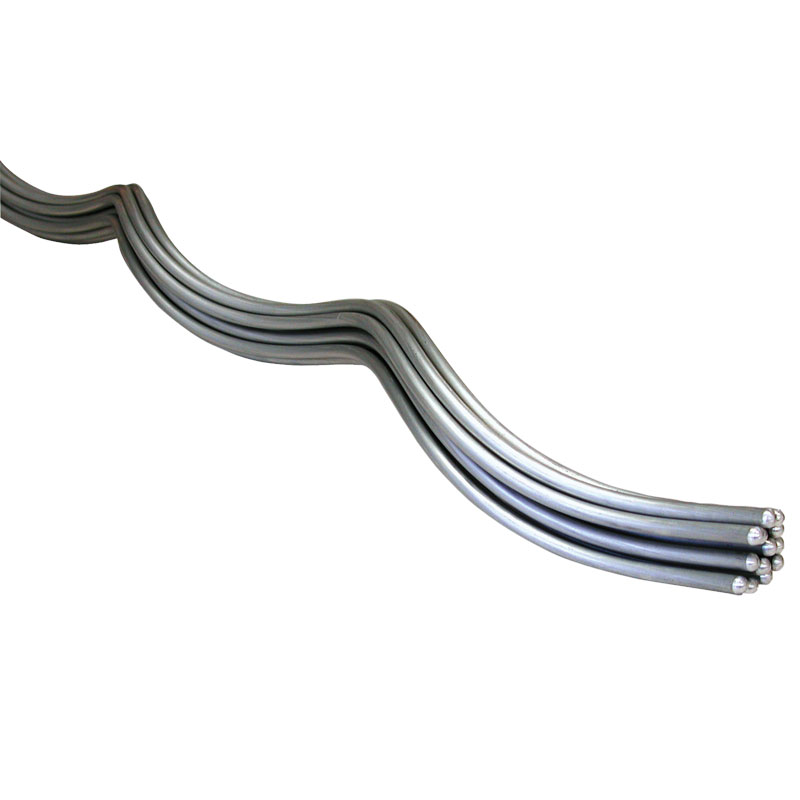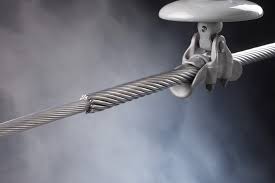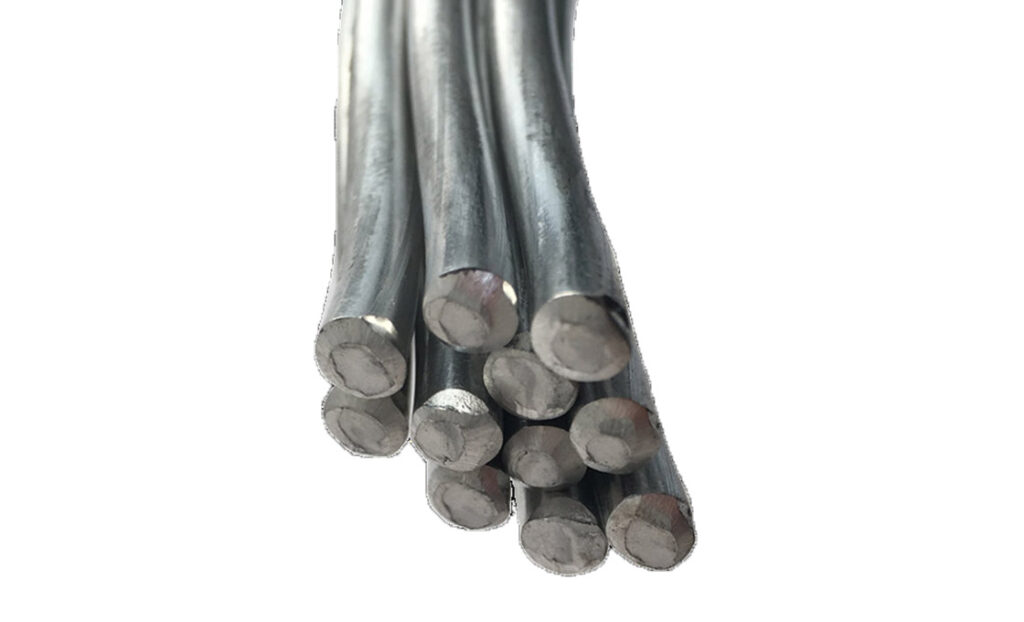
An armor rod is a device used to provide mechanical protection to the conductor. It also enhances the grip between the conductor and suspension clamps. It is also known as a gripping device or cable armor rod. Armor rod is from a helically wound structure that wraps around the conductor at the point where a suspension or tension clamp attaches. They are from materials such as aluminum or galvanized steel. These materials help them resist rust and corrosion and increase durability. Armor rods often position between the suspension clamp and the conductor to ensure a reliable and secure connection. Common types of armor rods include single-helix armor rods, double-helix armor rods and helical armor rod. They find use in applications such as transmission lines and corner and angled installations.
Key features of armor rod
The key features of armor rods help them provide mechanical protection. They also ensure the longevity and reliability of conductor connections. These features also contribute to the overall efficiency and reliability of overhead systems. The following are the key features of armor rods.

- Grip enhancement – armor rods improve the grip between conductors and suspension clamps. These prevent slippage and maintain secure connections under external forces.
- Corrosion resistance – the armor rods are from materials that provide resistance to corrosion. They also protect them from different environmental conditions.
- Versatility – they come in various designs and sizes to accommodate different conductor diameters and types.
- Abrasion protection – they wrap around the conductors which acts as a protective barrier against abrasion and wear.
- Durability – by reducing wear and abrasion on conductors and clamps, they contribute to the longevity of the components.
Selection and installation of armor rod
The selection for armor rods should ensure their compatibility. They should be compatible with specific line configuration, conductor type and weather conditions. It includes considering factors like line specification, environmental conditions, load and stress levels. Also, consider conductor type and size, suspension and tension clamps used and the budget considerations. The installation process of the armor rods should ensure the longevity, reliability and effective performance of the system. Additionally, follow the manufacturer instructions and industry best practices for successful installations. The following is a basic process of the installation.

- Ensure you have all the necessary tools and equipment on hand including safety gear, wrenches, cable lubricant and specialized tool recommended.
- Clean the conductor’s surface where the armor rods will install to ensure a clean and secure connection between the conductor and the armor rods.
- Apply the suitable lubricant if recommended to help ease the installation process. It also helps prevent damage to the conductor.
- Choose the installation points near the suspension or tension clamps.
- Place the armor rods over the conductor at the selected installation points. Ensure they orient correctly and wrap around the conductor.
- Wrap the armor rods around the conductors by hand to maintain the alignment of the armor rods and ensure thy fit comfortably.
- Secure the ends using the provided locking mechanisms, clips or fasteners.
- Maintain the recommended spacing between the armor rods as specified by the manufacturer. This is to ensure proper coverage along the length of the conductor.
- Inspect each armor rods to ensure they are properly secured and aligned.
Maintenance and inspection of armor rods
Maintenance and inspection of armor rods ensure the performance and reliability of transmission lines. The checks help identify wear, damage or other issues that might affect the grip and protection provided by the rods. Regular maintenance and inspection ensure the armor rods continue to provide effective protection and grip for the overhead transmission lines. Maintenance and inspection of the armor rods is as discussed below.
Inspection
- Conduct regular visual inspections of the armor rods and look for signs of wear, damage or cracks.
- Ensure the armor rods are properly aligned and positioned in the conductor and check for any misalignment, movement or sliding.
- Check that the spacing between the armor rod is consistent and within the manufacturer’s recommendations.
- Verify that the ends of the armor rods are securely attached and properly fastened according to the guidelines.
- Look for signs of corrosion or rust in the armor rods to prevent weakening of the material.
Maintenance
- Clean the armor rods regularly to remove dirt, debris and contaminants which helps to prevent abrasion and maintain the grip.
- Apply lubrication to the conductor surface before installing the armor rods if applicable. This helps to ease the installation process and reduce friction.
- Replace any armor rod that shows signs of wear, damage or corrosion to ensure reliability.
- Establish a regular maintenance schedule for inspecting and maintaining armor rods.
- Document records of inspection, maintenance activities and any replacements performed to help keep track the condition of the armor rods over time.
Comparative analysis
Comparative analysis involves evaluating various options available in the market. This depends on factors such as design, material, features, performance and cost. Ensure you conduct a comparative analysis to confirm the selection of the best armor rods. The following are the common factors to include in the comparative analysis for the armor rods.

- Design and construction – compare the design of different armor rods and how well it aligns with the specific needs of your project.
- Material and corrosion resistance – evaluate the materials used in the construction of the armor rods and compare the corrosion resistance of different material.
- Grip enhancement – compare how each type of the rod enhances grip between the conductor and the clamps. Select designs that provide a secure and reliable connection to minimize the risk of slippage.
- Protection and wear resistance – Check how well the rods protect the conductor from abrasion and wear and consider the durability of the materials used and how effectively the armor rods prevent damage to the conductor’s surface.
- Compatibility with clamps and conductors – Evaluate how well the armor rods work with different types of suspension and tension clamps.
Certifications and standards for armor rods
All armor rods used in overhead transmission lines must adhere to various industry certifications and standards to ensure their quality, safety and performance. When selecting armor rods for your application, ensure it complies with the relevant certifications and standards. This ensures the rods meet the industry best practices, safety requirements and quality expectations. The following are the common certifications and standards for armor rods.

- IEEE standards – this institute sets standards for various aspects of the electrical and electronics industry.
- IEC standards – this institute sets international standards that covers a wide range of electrical and electronic technologies.
- ASTM standards – this develops and publishes standards for a variety of industries including electrical and transmission line components.
- ISO standards – this also sets international standards for various industries although not specific to armor rods.
- Manufacturer’s certifications – reputable manufacturers often provide certifications and specifications for their products. This indicates that the armor rods meet certain quality and performance criteria.
Regional market for armor rod in Southeast Asian countries
The regional market for armor rods in Southeast Asian countries depends on the regions growing demands, expanding transmission networks and increasing focus on infrastructure development. The market is also dependent on the efforts to integrate renewable energy in the countries. From the increased investment from governments and private investors, the demand for reliable components like armor rods will remain strong. The following are the common factors influencing Southeast Asian markets.

- Southeast Asian countries are experiencing rapid economic growth and urbanization which leads to increased demand for electricity. This will lead to increased need to expand the power transmission networks and components like armor rods.
- Many southeast Asian countries are investing in infrastructure development aiming to improve energy security and reliability. This will lead to the growing demand for reliable components like armor rods.
- Incorporating renewable energy sources into the energy mix can address environmental concerns. The integration of solar energy and wind power requires reliable transmission systems and components like armor rods.
- Rapid urbanization in the region leads to increased electricity consumption in urban areas which requires the expansion and strengthening of transmission infrastructure.
- The diverse geography of the Southeast Asian countries causes challenges for the transmission line installations. Armor rods may help in areas such as coastal areas, mountainous areas and dense forests.
- Growth of industries in southeast Asian countries leads to need for stable and reliable power supply. Armor rods contribute to maintaining the integrity of transmission lines to serve industrial areas.
Frequently asked questions
What is an armor rod?
An armor rods is a component used to provide mechanical protection to the conductor and enhance the grip between the conductor and the suspension clamp.
What is the importance of armor rods on the transmission lines?
Armor rods serve to enhance the grip between the conductors and the clamps while providing mechanical protection against abrasion and wear. This ensures the stability and reliability of overhead transmission lines.
How do armor rods improve power transmission efficiency?
They prevent conductor sagging and reduce wear which contributes to the efficient power transmission and minimize power losses.
What are the different designs of the armor rods?
Armor rods are available in designs such as helical, double-helix and cross-armor configurations.
